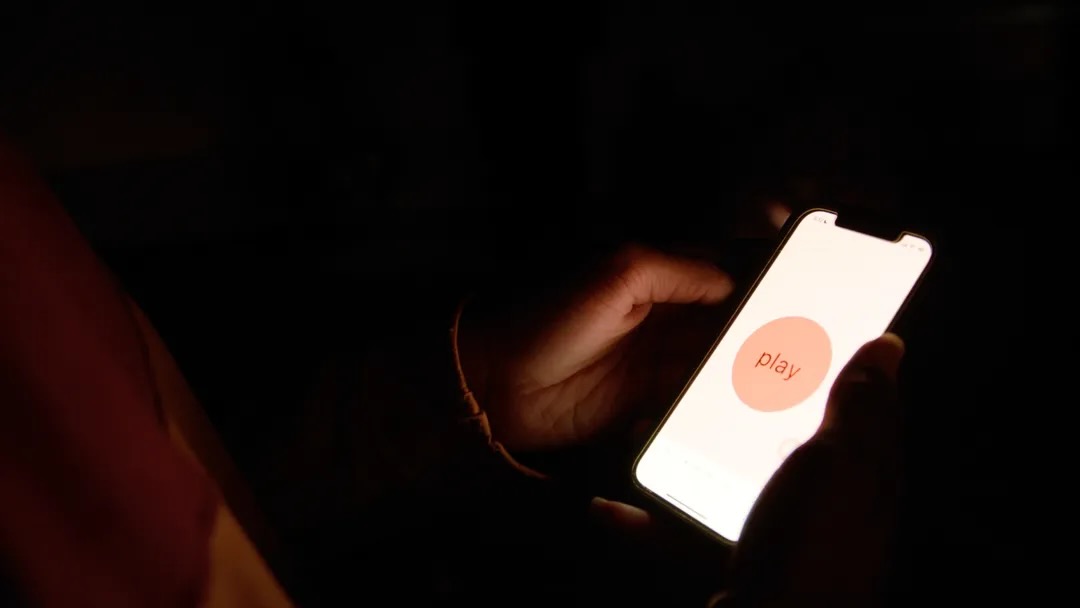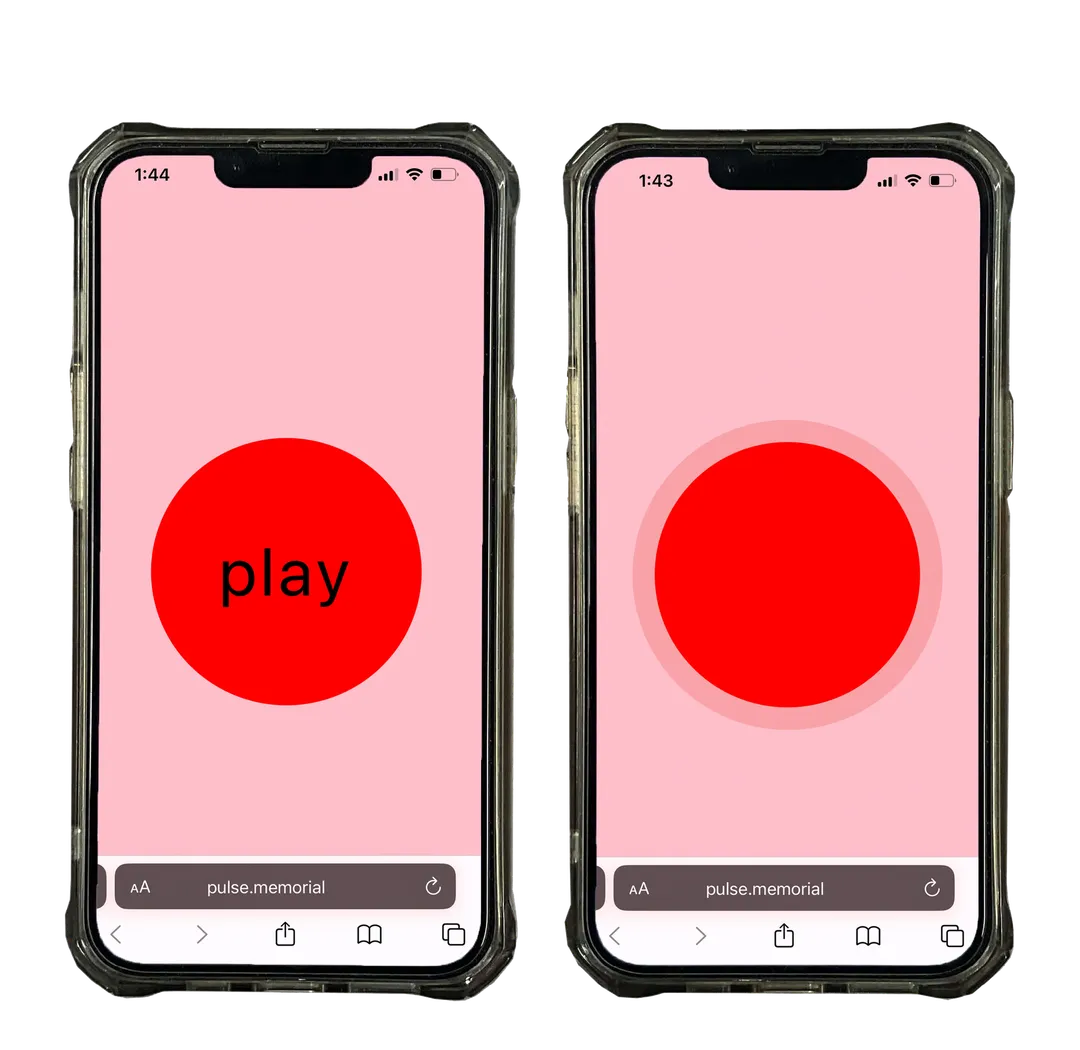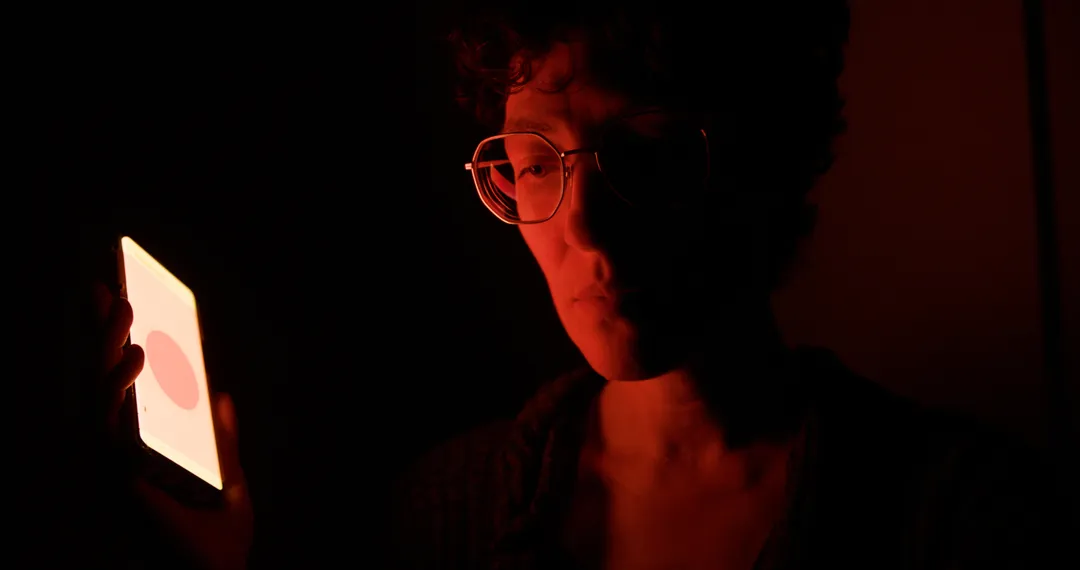PULSE MEMORIAL
participatory multi-channel sonic memorial, in progress, with august black and brook vann

Pulse Memorial sends audio streams to individual's mobile devices

49 channels of audio will be streamed to individual mobile devices as participants gather as a group

Participants simply press the play button; their mobile devices essentially act as speakers
Watch video documentation of an initial prototype for the project

49-channel participatory streaming memorial, community-based voices, data sonification, and software. Three hours.
This project was begun by August Black and Brook Vann in 2024, and they invited me to join their project in the spring of 2025, when we wrote a successful DeCastro Research Award proposal together.
On June 12, 2016, an active shooter walked into the Pulse nightclub in Orlando, Florida at 2:o2am with a SIG Sauer MCX semi-automatic rifle and a 9mm Glock 17 pistol and killed 49 LGBTQ+ individuals, mostly of Latinx descent, that were at the gay club celebrating “Latin Night”. The shooter fired over 200 rounds in the first five minutes, killing many on the dance floor, and then stood off with the police over the following three hours as patrons were barricaded in the back bathroom. Nine years after this horrific massacre, one of the most violent and tragic active shooter incidents in the United States, there is still no permanent memorial to address the grief and loss of life. Furthermore, the dominant conversation regarding this event is focused on terrorism and gun violence. There has been little to no acknowledgement of the marginalized communities affected by this incident.
As a living queer cyber memorial honoring the 49 lives lost, our Pulse Memorial project reimagines remembrance as radical inclusion and global solidarity—providing a platform for storytelling, reflection, and empowerment, allowing marginalized communities to heal and reclaim their histories. Designed as an online, participatory sound installation, the virtual memorial can only be fully experienced in groups, mimicking the communal atmosphere of a candlelight vigil. The project consists of a 24/7 web broadcast that distributes eight individual audio channels to participants who visit https://pulse.memorial with their mobile devices. When participants listen together in one location, they create a dynamic, moving multichannel soundscape. You can read about this initial prototype in Black and Vann’s SIGGRAPH paper and watch a brief video here. Currently, the eight-channel sound is composed of field recordings, audio abstractions, and data sonification using the numerical data associated with each victim (their birthday and victim number, listed alphabetically). The sound is meant to function as a narrative and virtual monument to commemorate the victims. The sound streams live in the network and only exist when the machines are on and people are listening together. They do not only exist on fixed spaces, but are grafted temporarily onto already existing architecture. Moreover, this project reimagines the potential of vibrational sonic experiences: the basis for many esoteric healing practices, such as those found in sound baths and tantric chanting, for example, where vibrations at particular frequencies cause calming, soothing, and meditative states of rest. The final output will be through web streaming, particularly through mobile browsers, of audience members to create a digital caphony memorial.
In the spring of 2025, we applied for and were awarded a $10,000 University of Colorado CMDI DeCastro Research Award to expand the project to 49 channels over 3 hours. The 49 channels are based on the number of victims and the 3 hours are based on the approximate time that the attack unfolded in the club. Inspired by the current graffiti wall memorial outside the Pulse club — the only existing memorial to date — this evolving composition invites contributions of spoken word that focus on queer and marginalized voices. These panels, layered with handwritten notes left by the community, accumulate and fade over time, capturing the shifting yet enduring nature of remembrance. Similarly, we aim to adopt an ephemeral model: as we solicit and collect new audio contributions, incoming audio (voice recordings, personal accounts) will gradually replace older tracks, creating a constantly evolving broadcasted memorial.
In contrast to site-specific physical memorials that might have stronger presence and local impact, our unique concept of a virtual memorial that can be experienced both on-site and in other locations has the potential for expanded reach and intimacy. Digital platforms transcend borders, enabling transnational participation and ensuring that marginalized voices—particularly those impacted by anti-LGBTQ+ policies, xenophobia, and rising authoritarianism—shape the global narrative. That our memorial is experienced only in groups using familiar devices at any time or place, provides a communal and sometimes awkward intimacy that is unique and impactful.
This intervention is critically timed, as regressive policies threaten queer and migrant rights worldwide. Our work fosters global citizenship by creating a collaborative digital space where diverse communities can bear witness, share stories, and mobilize solidarity. By centering accessibility and participatory storytelling, the project models how technology can democratize memory and activism. This dynamic platform amplifies intersectional justice struggles, linking Pulse to international movements resisting hate, displacement, and erasure. It invites users not only to remember but to reflect on their role in building equitable futures.
CREDITS
artists: Betsey Biggs, August Black, Brook Vann
GRANTS, AWARDS, COMMISSIONS
2025: DeCastro Research Award ($10,000) with August Black and Brook Vann, College of Communication, Media, Design and Information, University of Colorado Boulder, Boulder, CO, USA.